In some ways, it’s actually more difficult for us to write reviews of Blu-ray players: due to the digital workings of HDMI and HDCP, correct video output should result in identical picture quality. However, with the arrival of 4K Blu-ray, it transpires that most manufacturers have got certain key aspects wrong.
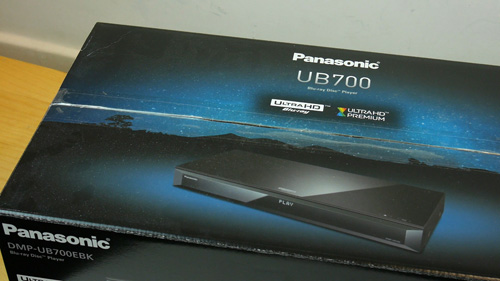
Not Panasonic though. We’ve been long-time admirers of the Japanese company’s high-quality video processing, and it appears its engineers have combed through the Ultra HD Blu-ray specifications and BT.2020 documents to make sure there are no missteps. We’ve tested the newly-released Panasonic DMP-UB700, and in a nutshell, it produced essentially the same correct image output as the flagship DMP-UB900 we reviewed a few months ago, which is hardly surprising given that they share the same 4K High-Precision Chroma Processor chipset.
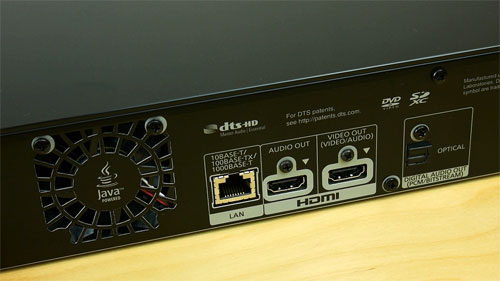 |
| Rear connections: 2x HDMI, LAN and digital audio optical output |
So what are other 4K UHD BD players getting wrong? Full credit has to go to Stacey Spears of the reference Spears and Munsil test disc fame, although we were alerted to the problem by film producer and Home Cinema Choice columnist Jon Thompson. Currently SpectraCal‘s chief colour scientist, Spears discovered that Samsung’s UBD-K8500 deck is using the wrong chroma resampling method for BT.2020 4:2:0 content found on 4K Blu-ray discs, resulting in a marginally softer picture.
Here’s the nitty-gritty. In BT.709 4:2:0 content, chroma is co-sited with luma in the horizontal direction, and interstitially in the vertical direction. With BT.2020 however, chroma has been specced to be co-sited vertically too. Manufacturers who don’t realise this will be applying BT709 maths for BT2020 material such as UHD BD, causing chroma to be shifted vertically by half a pixel (+0.5 vertical Y-C delay). Here’s an illustration of the difference between Rec.709 and Rec.2020 4:2:0 chroma layout (diagrams inspired by a Panasonic presentation):
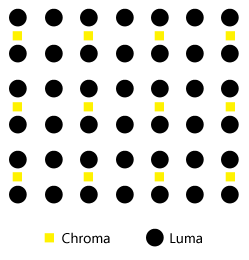 | 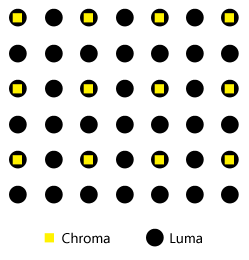 |
| BT.709 4:2:0 | BT.2020 4:2:0 |
To be fair, this loss in chroma resolution is unlikely to be noticed by most viewers, due to the ultra-high resolution of 3840×2160 content, and the fact that our eyes are inherently less sensitive to chroma than luma information anyway (which is the underlying basis for 4:4:4 to 4:2:2 or 4:2:0 chroma subsampling). Nevertheless, it’s reassuring to see a brand like Panasonic pay full attention to the specs to deliver the cleanest, most pristine picture that’s faithful to the director’s intentions. According to a reliable industry source, it is this Chroma Bug 2020 bug (as coined by Spears) that’s causing OPPO to temporarily hold back the release of its UDP-203 UHD Blu-ray player while waiting for a firmware fix.
One small complaint we have regarding the Panasonic UB700 (or indeed the step-up UB900) is its tendency to induce posterisation artefacts on HDR TVs that struggle to handle 12-bit video, including most 2015 sets and some 2016 models. Here’s an example from the Philips 65PUS7601 using the DMP-UB700 compared with the Samsung K8500:
Click on the options below to compare:
Samsung UBD-K8500 | Panasonic DMP-UB700

After some clarification, Panasonic insists it’s doing nothing wrong: its 4K BD players are merely obtaining the EDID from said displays, and returning 8-bit, 10-bit or 12-bit output based on the EDID info. However, since Ultra HD Blu-rays are encoded in 10-bit natively, offering a manually selectable “10-bit output” option would go a long way towards smoothing out gradation on less-capable televisions, thus increasing sales through wider compatibility. We’ve been informed that this solution is under consideration by Panasonic, though the company has not made any explicit promise.
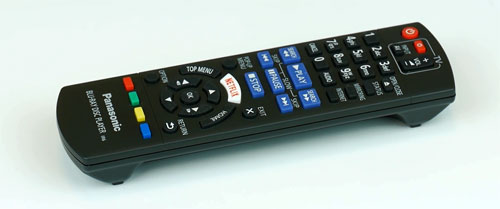
If you own a 2016 TV that can handle 12-bit video properly, the Panasonic DMP-UB700 is the clear winner in terms of picture quality versus the other two non-Panasonic 4K Blu-ray players available to buy in the UK and Europe: the Samsung K8500 suffers from undefeatable noise reduction on the Cb and Cr channels; whereas the Xbox One S uses incorrect RGB decoding leading to coloured posterisation on bright highlights.
Compared with the flagship Panasonic DMP-UB900, what are missing from the DMPUB700 are 7.1 analogue audio output, THX certification, a classier, backlit remote control and insulating feet. None of these omissions make any significant difference to picture quality, which will likely persuade many prospective buyers to choose the UB700 over its more expensive sibling, and save up to £200.
